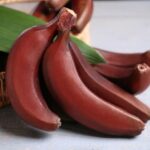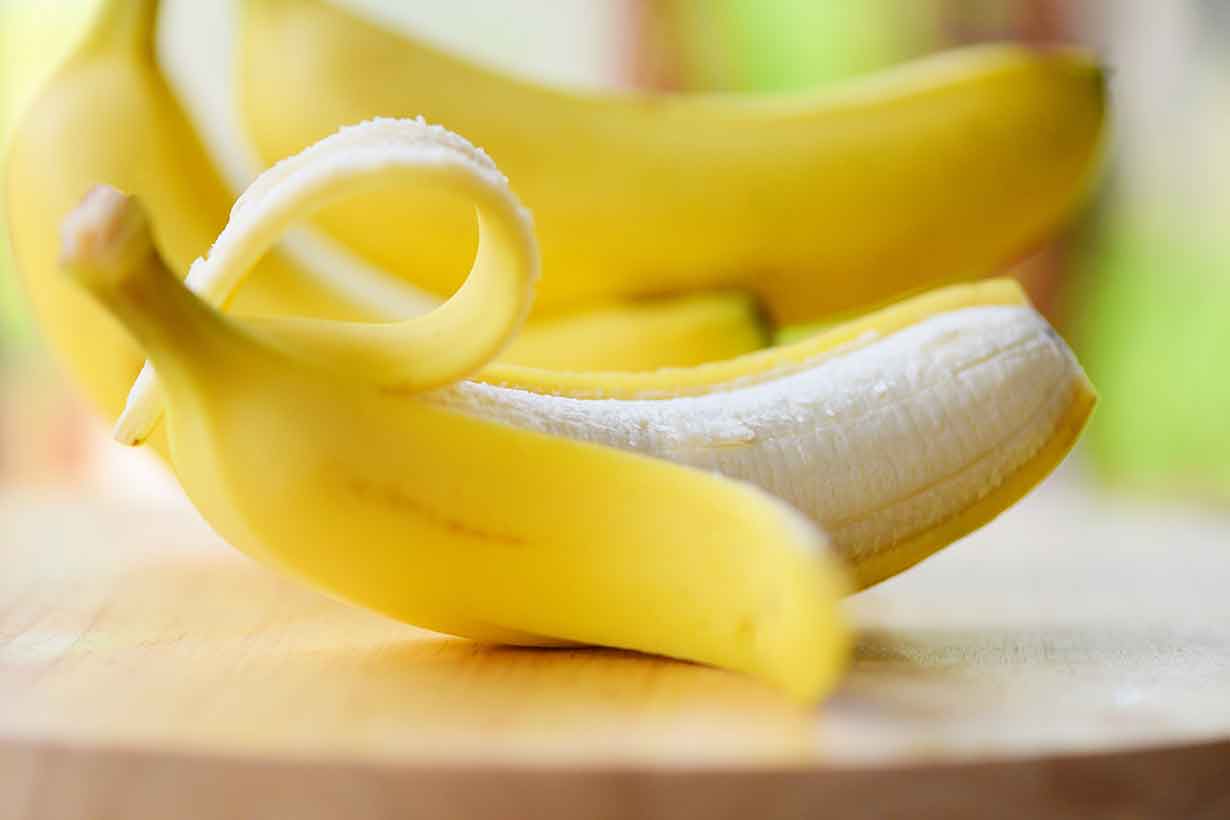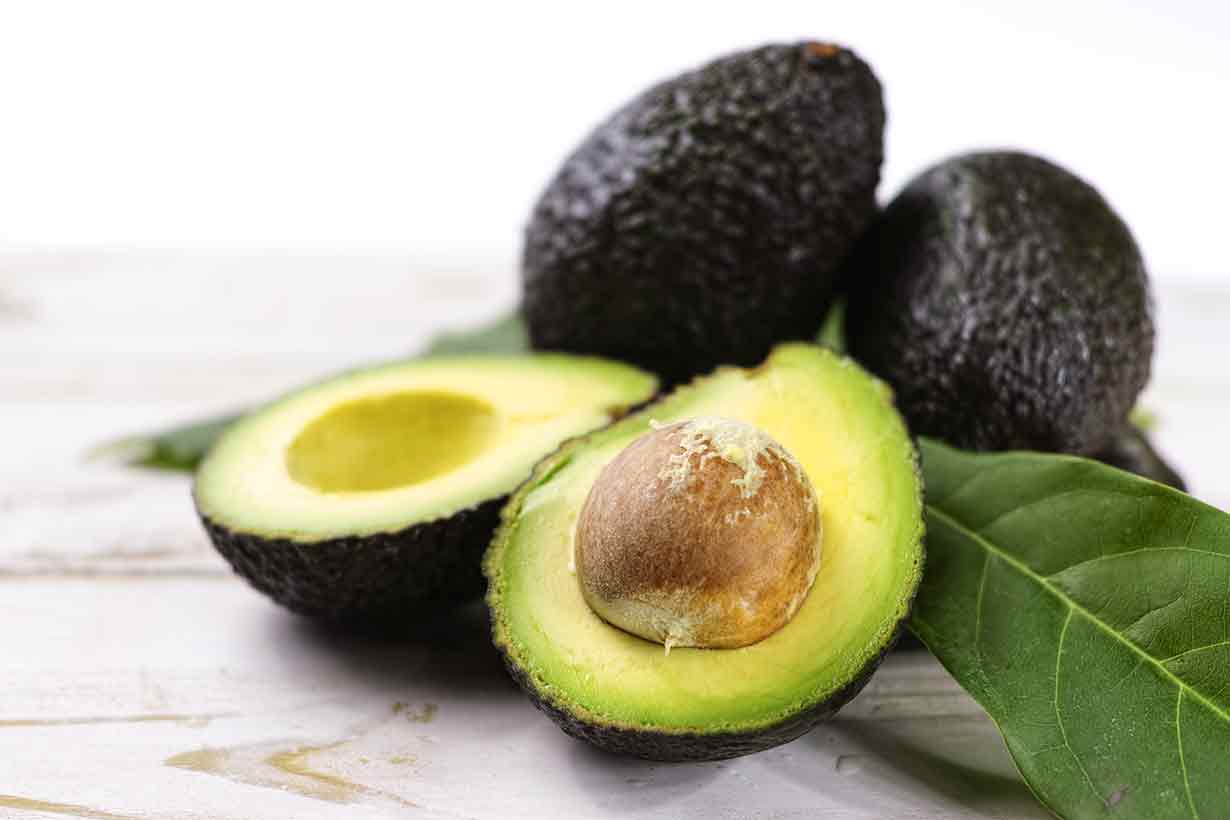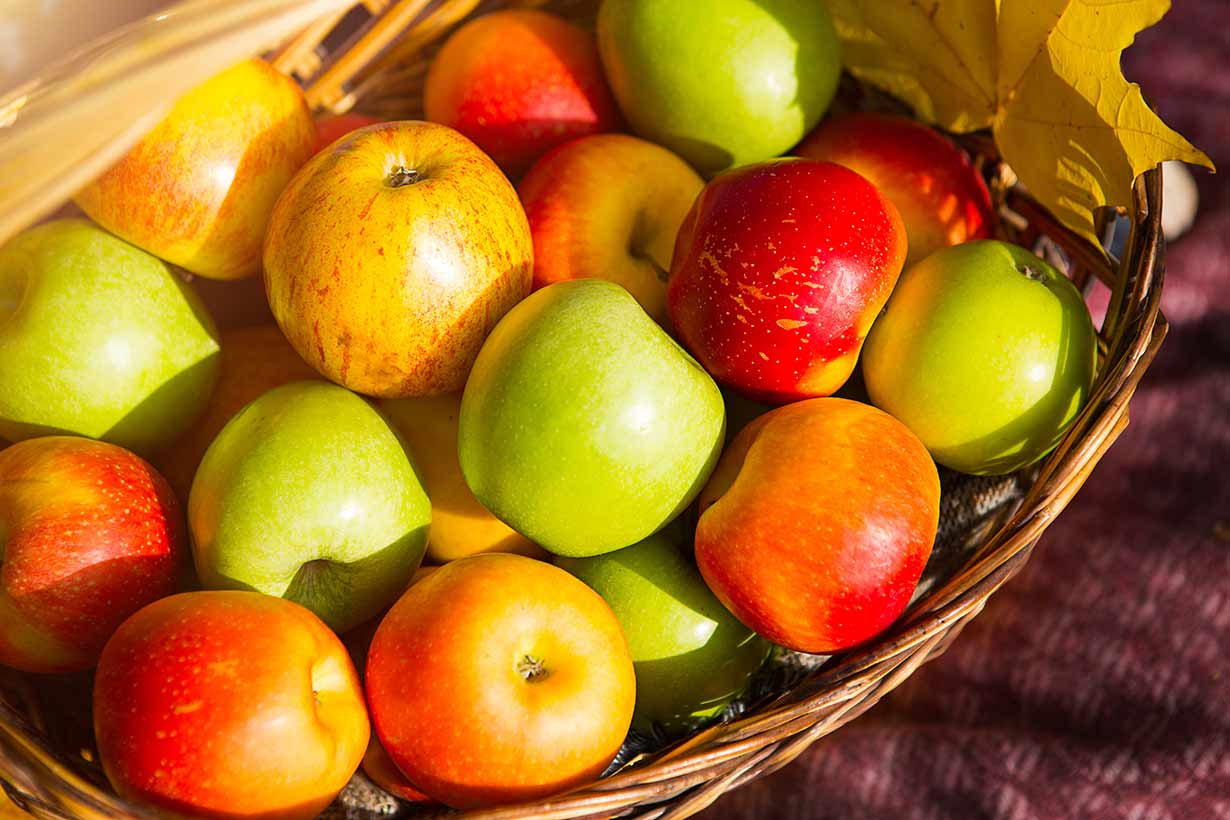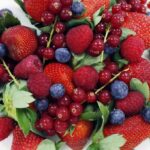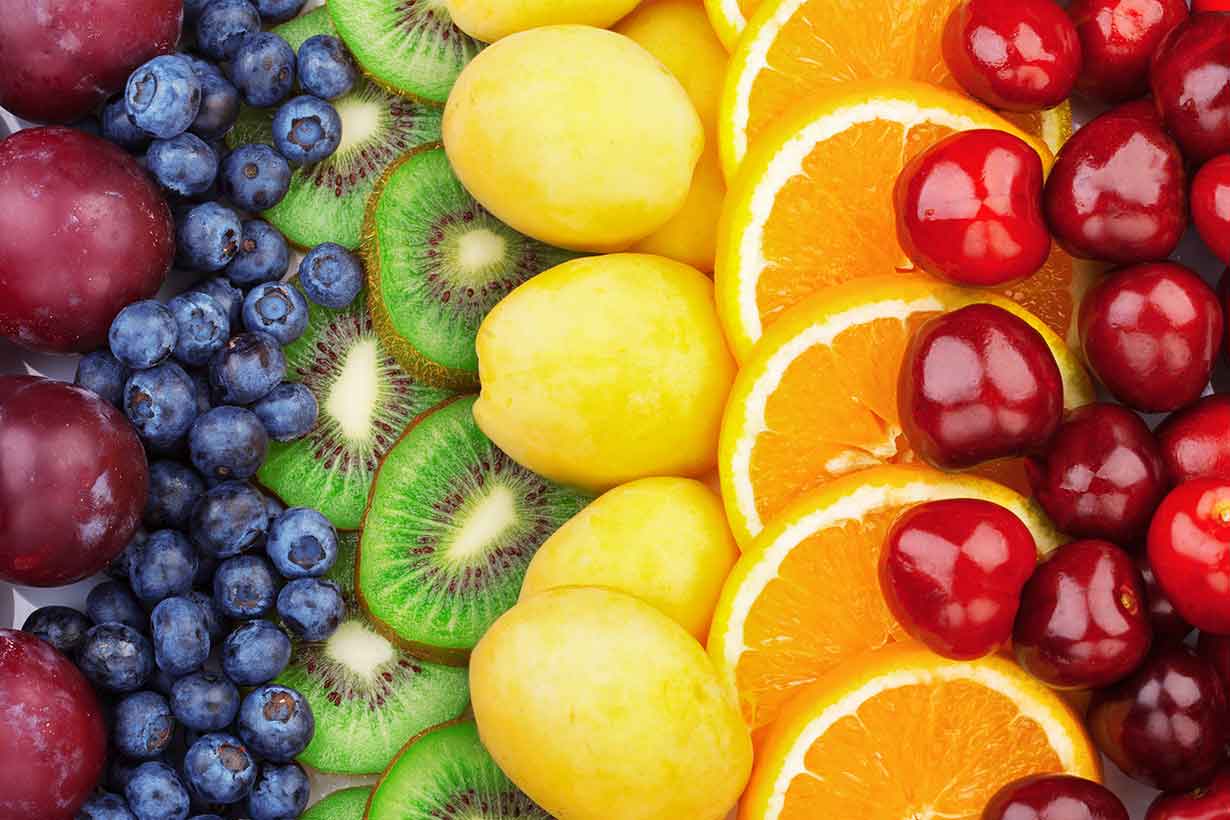Plantains are a banana cultivar also known as ‘cooking bananas.’
Unlike regular bananas, people usually cook plantains before consuming them.
Plantains are also somewhat different nutritionally from regular bananas.
This article looks at the nutritional values of plantains, their benefits, and how to use them.
Table of contents
What Are Plantains?
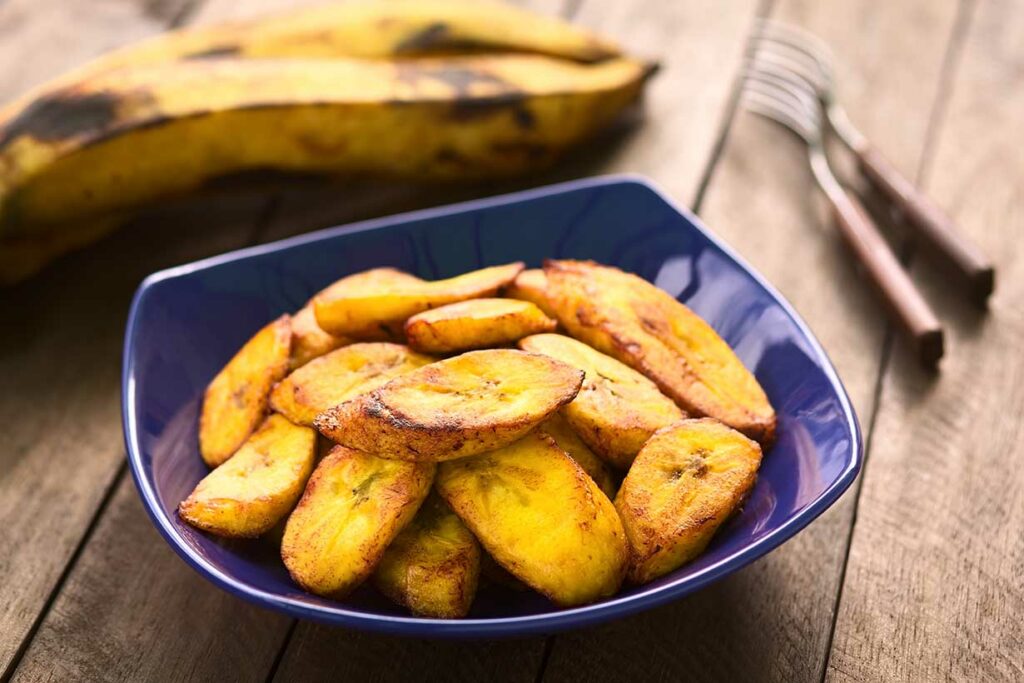
Plantains are botanically a fruit from the same family of flowering plants (Musa) as bananas (1).
Furthermore, they have a similar (but larger) appearance to bananas. That said, the nutritional profile and flavor of the two fruits are where the similarities end.
Plantains have their own distinct taste rather than tasting like bananas. Additionally, plantains have a higher starch content than bananas and contain a lower proportion of sugar.
Plantains are a popular staple food in some parts of Africa and the Americas and throughout tropical and subtropical areas where they grow (1).
Although it is possible to eat raw plantains, they are often fried, grilled, or roasted before consumption. However, they also work well as an ingredient in various recipes.
As previously mentioned, plantains are larger than bananas. In this regard, a typical large banana weighs around 136 grams, whereas an average plantain weighs about 270 grams (2, 3).
Nutritional Values
Using data from the USDA’s FoodData Central database, here are the nutritional values of a typical (270-gram) raw plantain.
Note: the nutrition profile of plantain can change significantly depending on how ripe (yellow) or unripe (green) it is. For this reason, values are shown for ripe yellow plantain and green plantain (3, 4).
Recommended daily values (% DV) were calculated using USDA data and the FDA’s published daily values (3, 4, 5).
| Name | Green Plantain | Yellow Plantain |
|---|---|---|
| Calories | 406 kcal | 329 kcal |
| Carbohydrates | 98.0 g | 86.1 g |
| Fiber | 5.87 g | 4.59 g |
| Sugars | 6.11 g | 47.2 g |
| Fat | 0.19 g | 0.95 g |
| Saturated | 0.32 g | – |
| Monounsaturated | 0.05 g | – |
| Polyunsaturated | 0.08 g | – |
| Omega-3 | 0.02 g | – |
| Omega-6 | 0.07 g | – |
| Protein | 3.34 g | 1.92 g |
Vitamins
| Vitamin | Green Plantain | % Daily Value | Yellow Plantain | % Daily Value |
|---|---|---|---|---|
| Thiamin (B1) | 0.27 mg | 22.5% DV | 0.17 mg | 14.2% DV |
| Riboflavin (B2) | 0.27 mg | 20.8% DV | 0.21 mg | 16.2% DV |
| Niacin (B3) | 1.47 mg | 9.2% DV | 1.81 mg | 11.3% DV |
| Pantothenic acid (B5) | 1.42 mg | 28.4% DV | 0.81 mg | 16.2% DV |
| Vitamin B6 | 0.19 mg | 11.2% DV | 0.65 mg | 38.2% DV |
| Choline | – | 0% DV | 36.4 mg | 6.6% DV |
| Folate, DFE | 74.8 mcg | 18.7% DV | 59.4 mcg | 14.9% DV |
| Vitamin A, RAE | – | 0% DV | 151.0 mcg | 16.8% DV |
| Vitamin C | 53.9 mg | 59.9% DV | 49.7 mg | 55.2% DV |
| Vitamin K | – | 0% DV | 77.8 mcg | 64.8% DV |
Minerals
| Mineral | Green Plantain | % Daily Value | Yellow Plantain | % Daily Value |
|---|---|---|---|---|
| Calcium | 5.34 mg | 0.4% DV | 8.1 mg | 0.6% DV |
| Iron | 2.0 mg | 11.1% DV | 1.48 mg | 8.2% DV |
| Magnesium | 109 mg | 26.0% DV | 97.2 mg | 23.1% DV |
| Phosphorus | 82.8 mg | 6.6% DV | 86.4 mg | 6.9% DV |
| Potassium | 1150 mg | 24.5% DV | 1310 mg | 27.9% DV |
| Sodium | 5.34 mg | 0.2% DV | 10.8 mg | 0.5% DV |
| Zinc | 0.48 mg | 4.4% DV | 0.51 mg | 4.6% DV |
| Copper | 0.31 mg | 34.4% DV | 0.2 mg | 22.2% DV |
| Manganese | 0.29 mg | 12.6% DV | 0.39 mg | 17.0% DV |
| Selenium | – | 0% DV | 4.05 mcg | 7.4% DV |
Phytochemicals
Plantains contain various flavonol glycosides, a class of flavonoids (6).
Flavonoids are a type of polyphenol, bioactive chemicals found in plant foods that may have health benefits for the human body (7, 8).
Plantains also contain a considerable amount of ferulic acid, a type of hydroxycinnamic acid (6).
Hydroxycinnamic acids are phenolic acids, which are also a class of polyphenols (9).
Glycemic Index
According to Harvard Medical School, plantains have a glycemic index of 55 (10).
Water Content
Plantains are approximately 65% water by weight (3).
Benefits of Plantains
Here are some of the leading nutritional benefits of plantains.
1) Plantains Are High In Fiber and Resistant Starch
First of all, a typical green plantain offers 5.87 grams of fiber. This represents more than 20% of the recommended daily value for fiber of 28 grams (4, 5).
In addition to providing a large amount of fiber, plantains also contain a considerable amount of resistant starch.
Resistant starch is a type of starch that bypasses digestion in the small intestine and travels to the large intestine (sometimes called the large bowel/colon). In the colon, the microbiota (bacteria in the gut) ferment the resistant starch (11).
It is thought that a greater intake of resistant starch may benefit human health in various ways, including by improving gut health and blood sugar control (12, 13, 14, 15).
Additionally, green plantains are one of the best dietary sources of resistant starch.
According to a 2020 study published in the ‘Current Research in Food Science’ journal, green plantains contain 50.4 grams of resistant starch per 100 grams (16).
2) Rich In Potassium
Plantains are a rich source of dietary potassium, with a ripe plantain offering 1310 mg of the mineral (3).
Based on this provision of potassium, one plantain offers more than a quarter of the recommended daily value (4700 mg) (5).
Potassium is an important mineral that, alongside sodium, plays a crucial role in regulating blood pressure (17, 18).
Additionally, extensive observational studies have demonstrated that low levels of potassium (and low dietary potassium compared to sodium intake) are associated with increased all-cause mortality (19, 20, 21).
3) Excellent Source of Vitamin C
While we often associate citrus fruits with vitamin C, both regular bananas and plantains provide the vitamin in high amounts.
Green and yellow plantains provide 53.9 mg and 49.7 mg of vitamin C, respectively (3, 4). This provision equals almost 60% of the recommended daily value (90 mg) for vitamin C (5).
Vitamin C plays a vital role in immune health, repairing damage, and keeping cells healthy (22, 23).
Other Scientific Research Findings On Plantains
There is a relative lack of studies looking at plantains and human health.
However, here are some research findings from existing studies:
- A randomized controlled trial found that green plantain helped to relieve persistent diarrhea in children. Compared to a yogurt control group, a green plantain-based diet improved diarrhea symptoms and lowered diarrhea’s duration by 18 hours (24).
- A randomized clinical trial looked at the potential for plantain to help treat heavy menstrual bleeding (HMB). However, there were no significant differences between the plantain intervention group and the placebo (25).
- In a randomized controlled trial, a plantain beverage lowered postprandial (post-meal) oxidative stress. In addition, the study found that oxidized low-density lipoprotein (LDL) levels were significantly reduced in the plantain beverage group compared to a placebo group (26).
It is important to note that these are all single studies, and it is difficult to interpret the importance of the findings until further research is available.
How Do Plantains Compare To Bananas Nutritionally?
There are some key differences between bananas and plantains.
Among these, the main difference is that plantains have a higher starch content and sugar contributes proportionally less to their carbohydrate content.
As green bananas ripen, their starch content turns into sugar. However, plantains maintain more of their starch content as they ripen.
The table below shows how ripe (yellow) plantains and bananas compare nutritionally per 100 grams. The data source is the USDA FoodData Central database (3, 27).
| Name | Ripe Plantains | Ripe Bananas |
|---|---|---|
| Calories | 122 kcal | 98 kcal |
| Carbohydrates | 31.9 g | 23.0 g |
| Fiber | 1.7 g | 1.7 g |
| Sugars | 17.5 g | 15.8 g |
| Fat | 0.35 g | 0.29 g |
| Protein | 1.3 g | 0.74 g |
| Thiamin (B1) | 0.06 mg | 0.06 mg |
| Riboflavin (B2) | 0.08 mg | 0.1 mg |
| Niacin (B3) | 0.67 mg | 0.66 mg |
| Pantothenic acid (B5) | 0.3 mg | – |
| Vitamin B6 | 0.24 mg | 0.21 mg |
| Choline | 13.5 mg | – |
| Folate, DFE | 22.0 mcg | 14.0 mcg |
| Vitamin A, RAE | 56.0 mcg | 1.0 mcg |
| Vitamin C | 18.4 mg | 12.3 mg |
| Vitamin K | 28.8 mcg | 0.1 mcg |
| Calcium | 3.0 mg | 5.0 mg |
| Iron | 0.55 mg | 0.4 mg |
| Magnesium | 36.0 mg | 28.0 mg |
| Phosphorus | 32.0 mg | 22.0 mg |
| Potassium | 487.0 mg | 326.0 mg |
| Sodium | 4.0 mg | 4.0 mg |
| Zinc | 0.19 mg | 0.16 mg |
| Copper | 0.07 mg | 0.10 mg |
| Manganese | 0.14 mg | 0.26 mg |
| Selenium | 1.5 mcg | 2.5 mcg |
As shown in the nutritional values, the nutrient content of plantains and bananas is slightly different.
Generally, plantains appear to have a larger content of most vitamins and minerals.
How to Use Plantains
Although it is possible to eat raw plantains, people usually cook them.
Making pan-fried plantains is one of the most popular ways of consuming them:
Time needed: 10 minutes
Ingredients: plantains, oil of choice, salt
- Peel and chop
First, peel the plantains and chop them into small pieces about 1-2cm thick.
- Heat the oil
Heat your preferred choice of oil in a pan
- Add the plantains
Once the oil is hot, add the plantains into the pan. Fry for one to two minutes, then turn the plantains over and do the other side.
- Remove plantains from the heat
Once the plantains are fully cooked, remove them from the pan. They should have started to go brown as they caramelize at this point.
- Add salt
After removing the plantains from the pan, add a little salt to taste.
- Eat – or leave to cool
Once finished, the plantains are ready to eat hot, or they can be left to cool for later. However, plantains taste better hot.
For some more plantain ideas, there is a list of twenty recipes here.
Where To Buy
If no local grocery stores or supermarkets sell plantains, it may be worth checking a local Asian grocery store, as they often carry plantains.
Food markets may also sell them, and so may ‘international’ food stores that carry a wide range of fruits.
Common Questions
Plantains are botanically a fruit, and they are from the same flowering plants as bananas. However, unlike most fruit, it is common to cook plantains before consuming them.
Yes, you can eat raw plantains, and there are no issues with consuming them. However, they won’t taste as good as cooked plantains.
Yes, they do provide a moderate amount of fiber. However, several other fruits provide significantly higher amounts of fiber, gram for gram. Here are some of the best.
Final Thoughts
Like the closely-related banana, plantains provide a wide range of nutrients.
Among these nutrients, vitamin C, vitamin K, and potassium are present in the highest amounts.
Plantains are also a versatile fruit that we can use in various recipes and have an enjoyable taste.
As a cooked fruit, plantains have some unique characteristics, taste great, and can add good nutritional value to the average diet.

